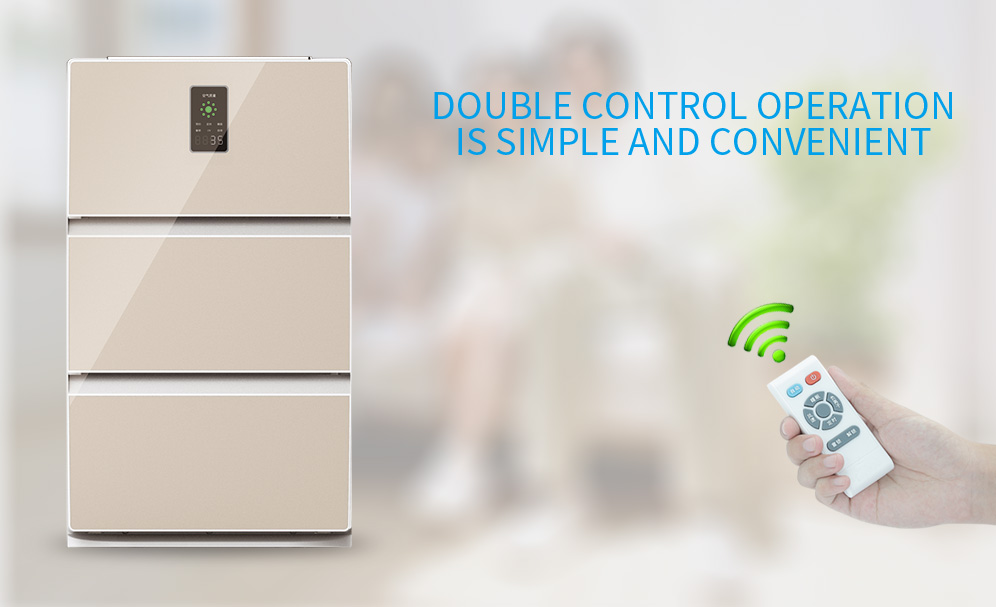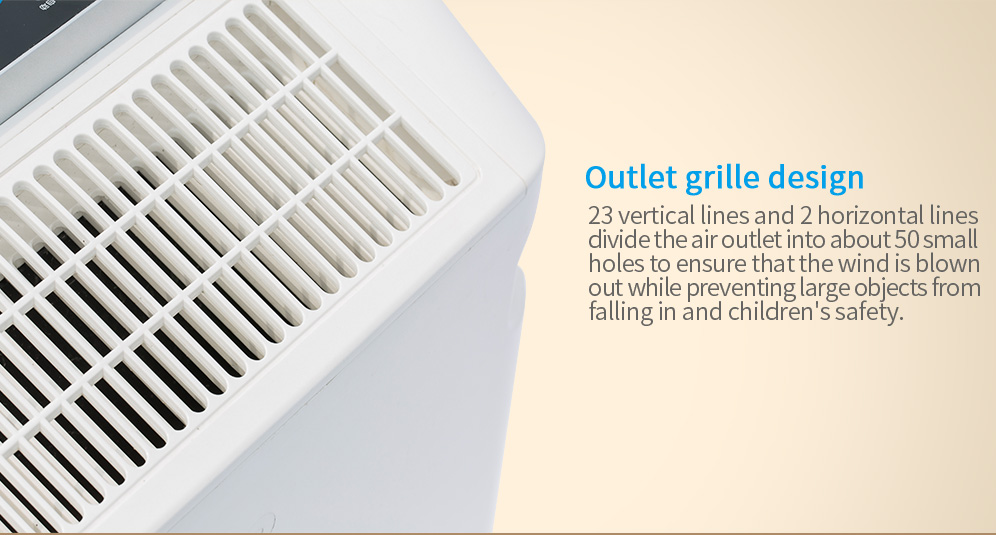Principle of air purifier

Air purifiers, also known as “air cleaners”, air purifiers, purifiers, are capable of adsorbing, decomposing or converting various air pollutants (generally including PM2.5, dust, pollen, odor, formaldehyde, etc.). , bacteria, allergens, etc., products that effectively improve air cleanliness, mainly divided into household, commercial, industrial, and building.
There are many different technologies and media in the air purifier that enable it to provide clean and safe air to the user. Commonly used air purification technologies include: adsorption technology, negative (positive) ion technology, catalytic technology, photocatalytic technology, superstructure photo mineralization technology, HEPA high efficiency filtration technology, electrostatic dust collection technology, etc.; material technology mainly includes: photocatalyst, activated carbon, Synthetic fiber, HEPA high-efficiency material, negative ion generator, etc. The existing air purifiers are mostly compounded, that is, a plurality of purification technologies and material media are simultaneously used.
The air purifier is mainly composed of a motor, a fan, an air filter and the like. The working principle is as follows: the motor and the fan in the machine circulate the indoor air, and the polluted air passes through the air filter in the machine to remove various pollutants. Or adsorption, some models of household air purifiers will also be equipped with a negative ion generator at the air outlet (the high voltage in the negative ion generator generates DC negative high voltage when working), the air is continuously ionized, a large number of negative ions are generated, and is sent by the micro fan. The negative ion airflow is formed to achieve the purpose of cleaning and purifying the air.
Passive adsorption filtration purification principle (filter purification)
The main principle of the passive hot sele air purifier is to use the fan to pump air into the machine and filter the air through the built-in filter, which can mainly filter dust, odor, toxic gas and kill some bacteria. The filter screen is mainly divided into a particulate filter and an organic filter. The particulate filter is divided into a coarse filter and a fine particle filter.
The quality of the fan and filter of this type of product determines the effect of air purification, and the location of the machine and the layout of the interior will also affect the purification effect.
Active purification principle (no filter type)
The fundamental difference between the principle of the active air purifier and the passive air-purifying principle is that the active air purifier is free from the limitations of the fan and the filter screen, and is not passively waiting for the indoor air to be pumped into the purifier for filtration and purification. It is an effective and active release of purification and sterilization factors into the air. Through the characteristics of air diffusion, it can reach the corners of the room to purify the air without dead angle.
The technologies for purifying sterilization factors in the market mainly include silver ion technology, negative ion technology, low-temperature plasma technology, photocatalytic technology, and plasma ion group ion technology. The biggest defect of this kind of product is the problem of excessive ozone emission.
Double purification class (active purification + passive purification)
This type of purifier combines passive purification technology with active purification technology.
How to buy
1, choose the right purchase channel
When purchasing an air purifier, it is recommended to purchase it in regular channels such as electrical stores, brand stores, and mainstream e-commerce websites. The first air purifier is sold in Taobao, Jingdong, Suning Tesco, Alibaba, official website, etc.
For consumers who need to protect PM2.5, it is recommended to choose an air purifier with outstanding PM2.5 purification capability. Newly renovated homes can focus on air purifiers that have outstanding formaldehyde and toluene capabilities. The first air purifier has PM2.5 purification ability and formaldehyde removal function, so you can worry about it.
2, filtration technology
The particulate pollutant filtering technology is mainly the HEPA filter. The quality of the HEPA filter is uneven. Some small brand filters have high filtration efficiency, but the resistance is high, the energy efficiency ratio is low, and it is easy to block and has a short life. It is recommended to use the deep dust-proof HEPA filter with the electrostatic resident. The electrostatic electret technology makes the non-woven fabrics have positive and negative electricity, which effectively captures the particles in the air. Many HEPA filters are said to have static electricity. Electret technology, but for technical reasons, many of the filter’s electret charges decay very quickly in a short period of time, resulting in reduced filtration efficiency and permanent guarantee that the electret efficiency is not attenuated.
3, pay attention to the applicable area or the amount of clean air (CADR)
The strength of the purifying capacity of the air purifier is mainly determined by the applicable area and the amount of clean air (CADR: the rate of clean air provided). The relationship between the two is Applicable area = CADR × 0.1. The ability to purify other contaminants should be combined with the applicable area. [8]
4. Energy efficiency ratio and energy efficiency rating
Air purifiers are usually used continuously for a long time. The energy efficiency ratio is an important indicator for measuring the purifying capacity and power consumption of air purifiers. It is worthy of attention. The first brand air purifier has a high energy efficiency ratio and energy efficiency rating, and the air purifier is very energy efficient, which can effectively reduce your cost of use.
Contact us for more products and discounted prices
Helen:
+86 13922346046
info@olansiglobal.com
https://www.olansiglobal.com
